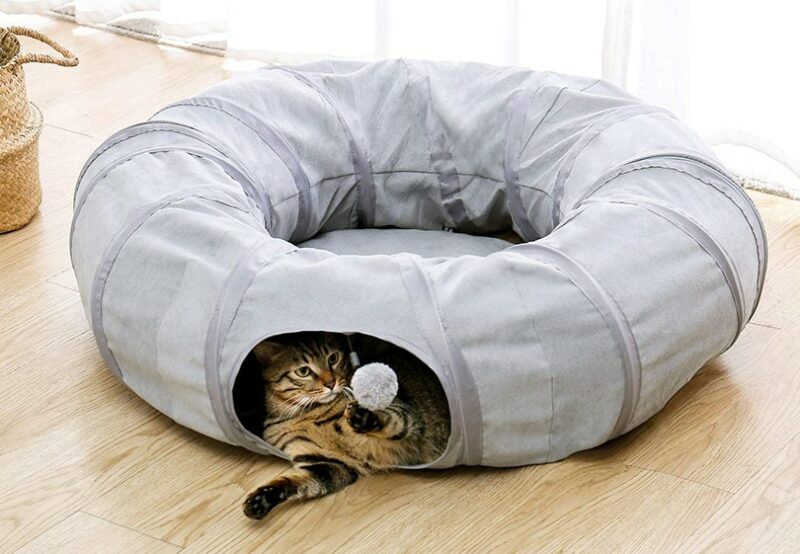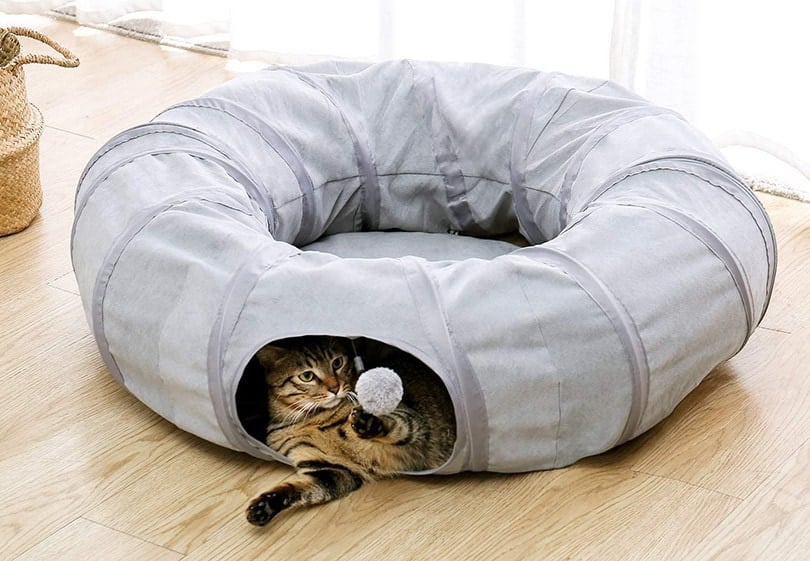
You know it just as we do: cats are exceptional companions! Indeed, even if they were tamed thousands of years ago, our pet felines still have a little wild side. But, unlike dogs, always ready to follow their owner in all their adventures, the cat will be more independent. We’ve all lived it: if something doesn’t please her, Ms. Kitty will let you know!
However, this little savage character is – most of the time – quite charming, especially when it’s time to play. This is because playing with your indoor tiger stimulates her predator side. Nevertheless, that mischievous side may only appear if the toy catches your cat’s attention. So, to help you find the best cat toy in Canada, we’ve reviewed and selected eight products.
Keep reading to discover the best cat toys that will satisfy your beloved kitty’s insatiable curiosity and desire to play!
A Quick Comparison of Our Favorites in 2024
| Image | Product | Details | ||
|---|---|---|---|---|
| Best Overall |
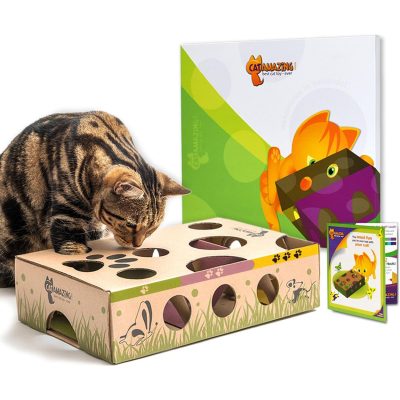
|
Cat Amazing Interactive Treat Maze |
|
CHECK PRICE |
| Best Value |
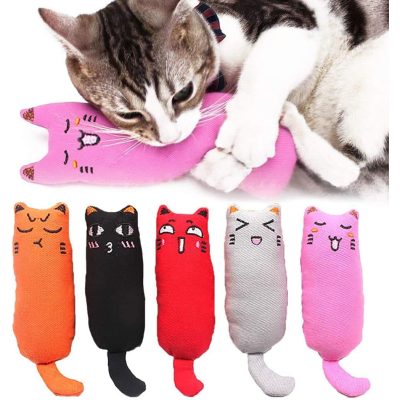
|
Legendog Cat Catnip Toys |
|
CHECK PRICE |
| Premium Choice |
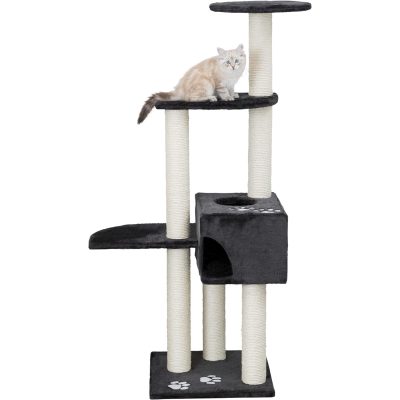
|
Trixie Alicante Cat Tree |
|
CHECK PRICE |
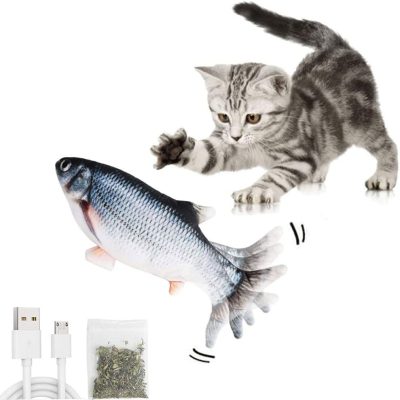
|
Electric Dancing Fish Catnip Toy |
|
CHECK PRICE | |
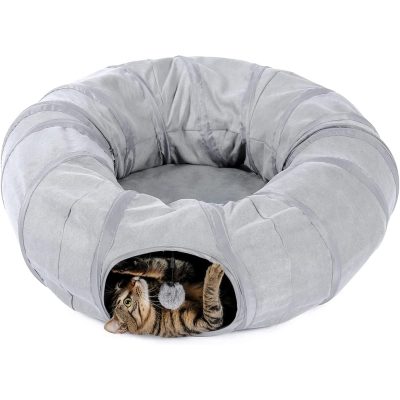
|
PAWZ Road Cat Tunnel Bed |
|
CHECK PRICE |
The 8 Best Cat Toys in Canada
1. Cat Amazing Interactive Treat Maze & Puzzle Game for Cats – Best Overall
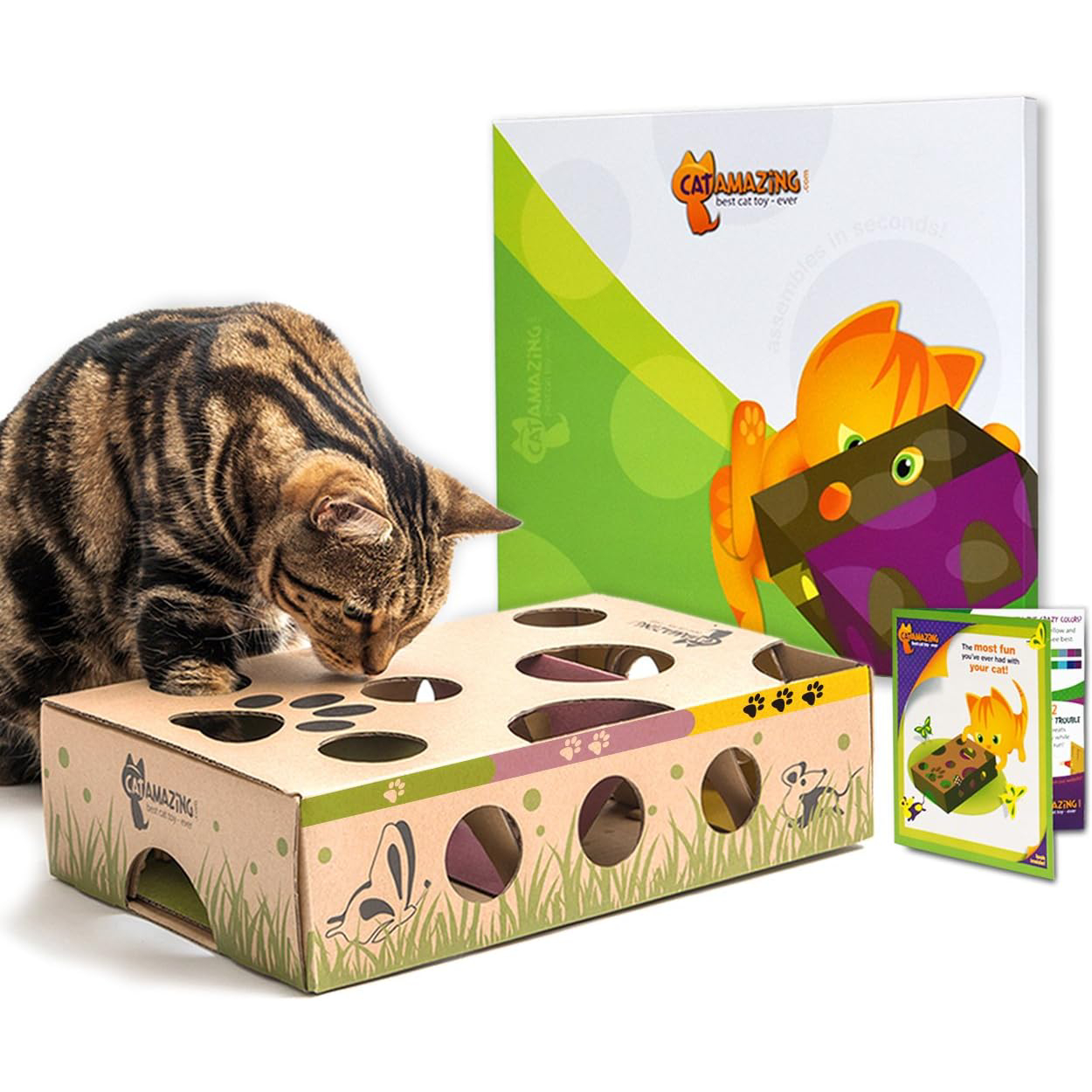
| Material: | Cardboard |
| Durability: | High |
All cat owners have experienced this disappointment: you buy a premium cat game, and your feline does not show an ounce of interest in it, preferring the packaging box instead! But that’s because they don’t yet know the Cat Amazing Interactive Treat Maze & Puzzle Game. This easy-to-use, environmentally friendly, biodegradable, and easy to store toy is our best overall option, as it is recommended by veterinarians for exercise, slower eating, weight loss, and meal management of our beloved kitties. This mentally and physically stimulating toy works with a variety of cat food and treats, and has three difficulty levels for smart cats. In addition, its price is more than affordable. Nevertheless, some cats seem to not understand the point of the game, which is a bit disappointing, both for the owner and for the confused cat!
- Recommended by vets
- Designed to mentally stimulate your feline for hours
- Affordable
- Encourages cat’s natural instincts
- Environmentally friendly
- Has compartments for treats
- Some cats don’t like to work hard for the treats
2. Legendog Cat Catnip Toys – Best Value
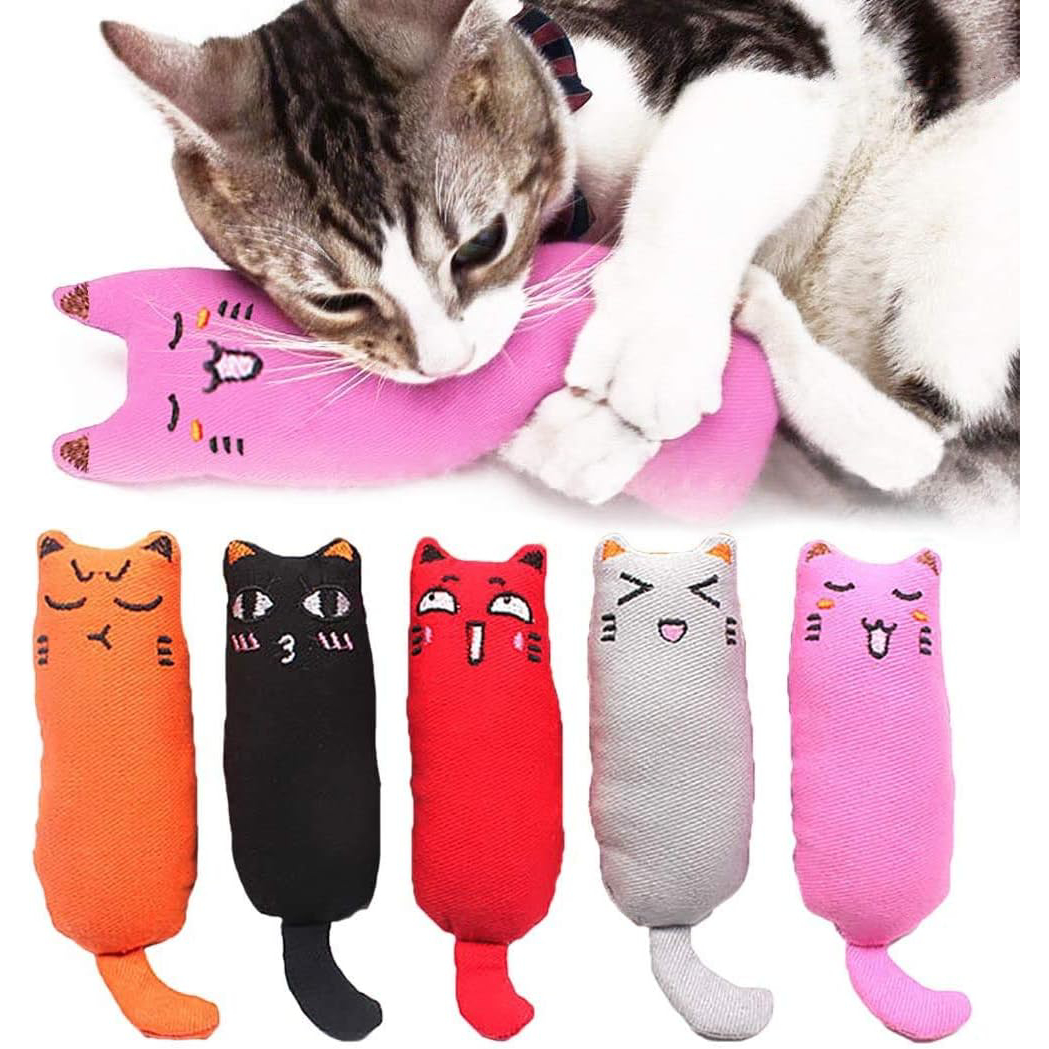
| Material: | Plush toy |
| Durability: | High |
You don’t have to break your piggy bank for your kitty to have fun! This simple yet really entertaining cat toy is the best value for the money. Legendog Cat Catnip Toys is an adorable little plush that contains organic catnip grown without pesticides or chemicals, ensuring it is safe for your furry friend. This plush toy mentally and physically stimulates your cat to hunt, stalk, hunt, pounce, hit, and kick; the material used is also resistant against the teeth and sharp claws of your little tiger. Plus, this plush comes in five different colors and can be used as a comforting pillow when your kitten has burned off all of her energy! However, some cats are insensitive to catnip, which could limit their interest in this toy.
- Bite-resistant material
- Very affordable
- Super cute design
- Some cats are insensitive to catnip
- Cats may lose interest after a while
3. Trixie Alicante Cat Tree – Premium Choice
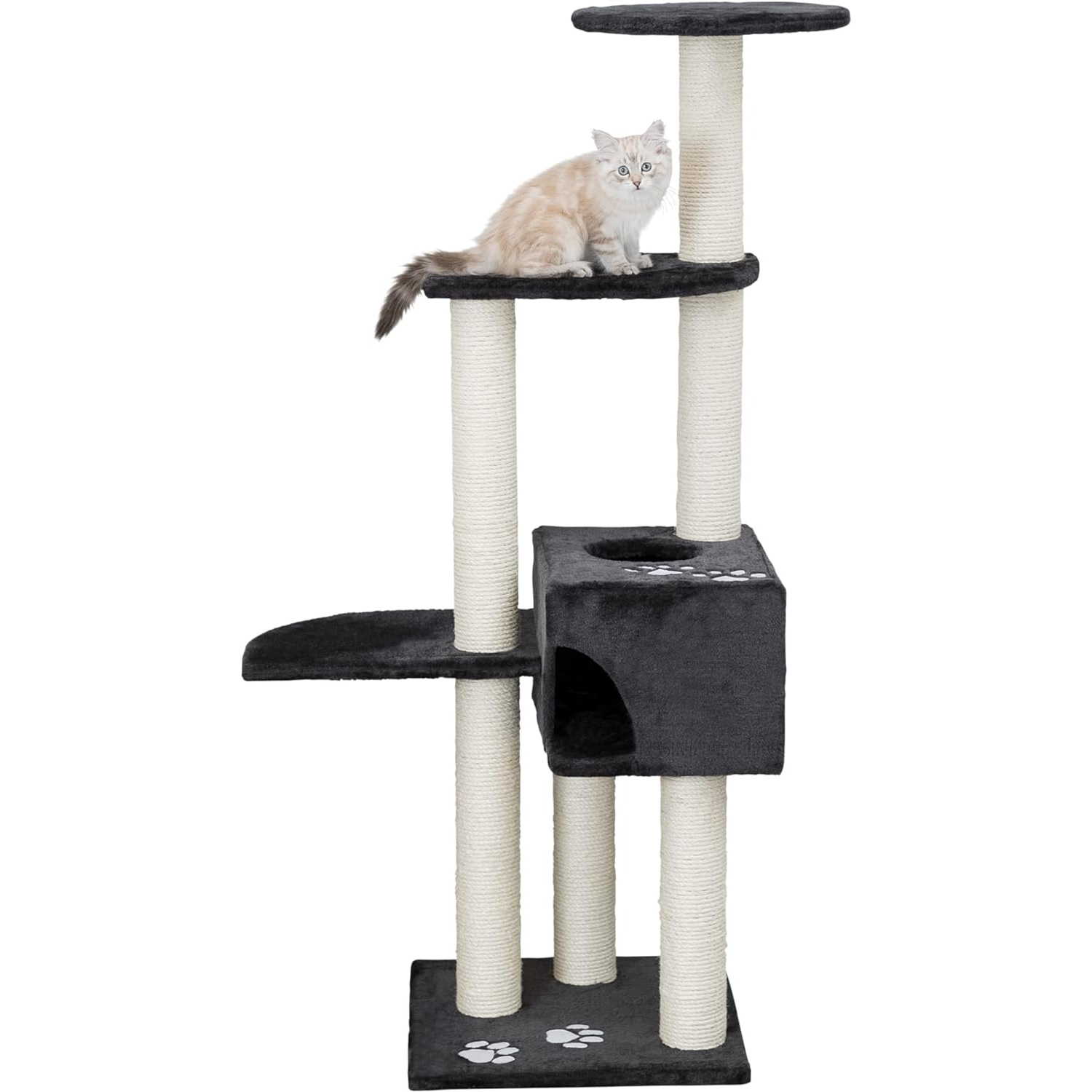
| Material: | Wood, sisal, plush |
| Durability: | Very high |
Cutting your cat’s claws can be a real chore. So, let’s not even talk about more thorough grooming. And just like you, we looked for the solution for a long time, but ended up finding it: a grooming tree! The latter will take care of part of your cat’s grooming needs by getting her to rub against the branches of the same tree, which are provided with scratching areas made with sisal. This real condo for cats is perfect if you have several felines in your home because they will be able to rest and scratch their teeth on one of the floors.
Besides, several buyers have commented on the great resistance of the material, since they bought this tree several years ago and it is still standing! Of course, the high price can be a major downside to purchasing, but you can be confident that it will last you for years to come.
- Very sturdy
- Posts long enough for cats to stretch and scratch
- Looks good in your house
- Cats love it
- Ideal for a multi-cat house
- Very expensive
- Beige color may be harder to wash
4. Electric Dancing Fish Catnip Toy
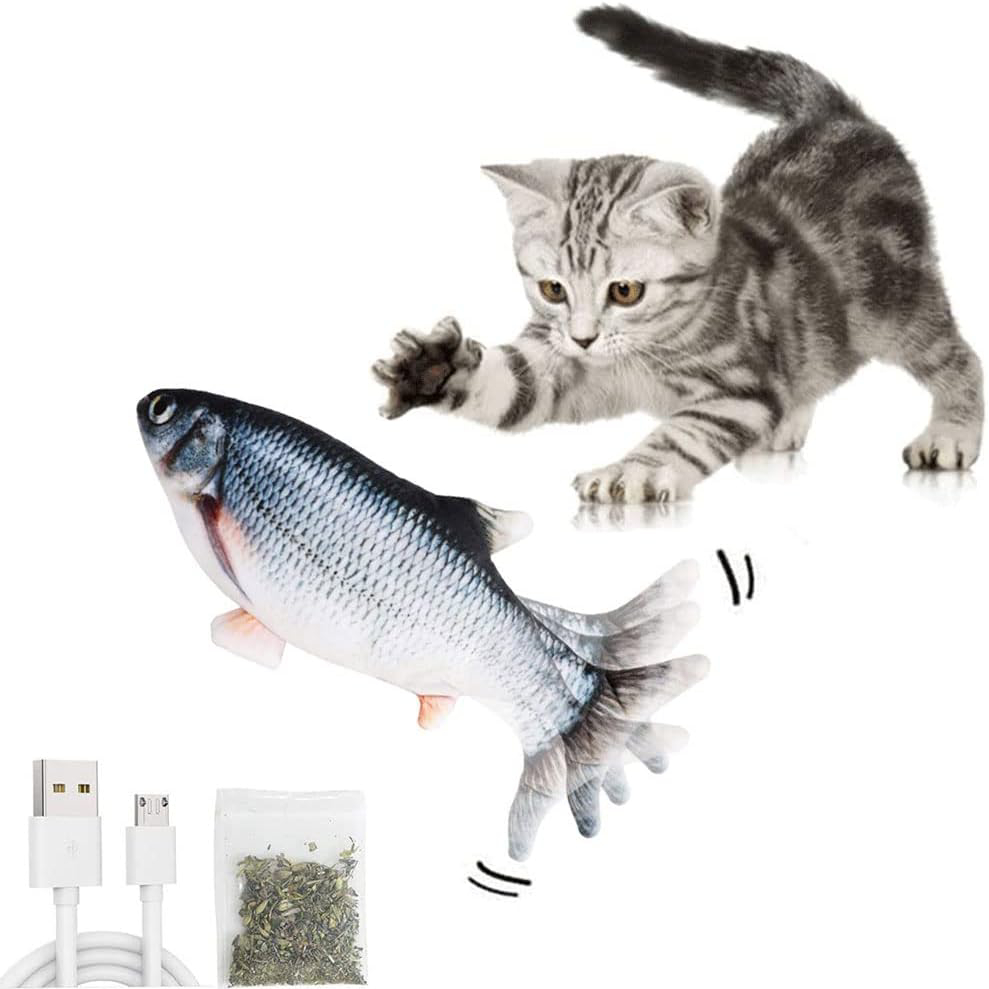
| Material: | Soft cotton |
| Durability: | Medium |
The Electric Dancing Fish Catnip Toy is a technological gem, as an interactive fish-shaped cat game with ultra-realistic features, which reproduces the flapping of the tail like a real fish. But its secret does not lie there! It has a motion detector that activates the fish when movement from the owner or cat is detected. This makes the experience even more exciting for your cat. In addition, you can add catnip to the belly of the fish (catnip is included with your purchase), to stimulate and relax your feline. However, as mentioned before, some cats are insensitive to catnip; nevertheless, the appeal of this toy goes beyond the catnip.
- Appeal to a cat’s hunting instinct
- Catnip can relieve the cat’s stress
- No batteries needed
- May be too big for kittens
- Some cats are insensitive to catnip
5. PAWZ Road Cat Tunnel Bed with Central Mat
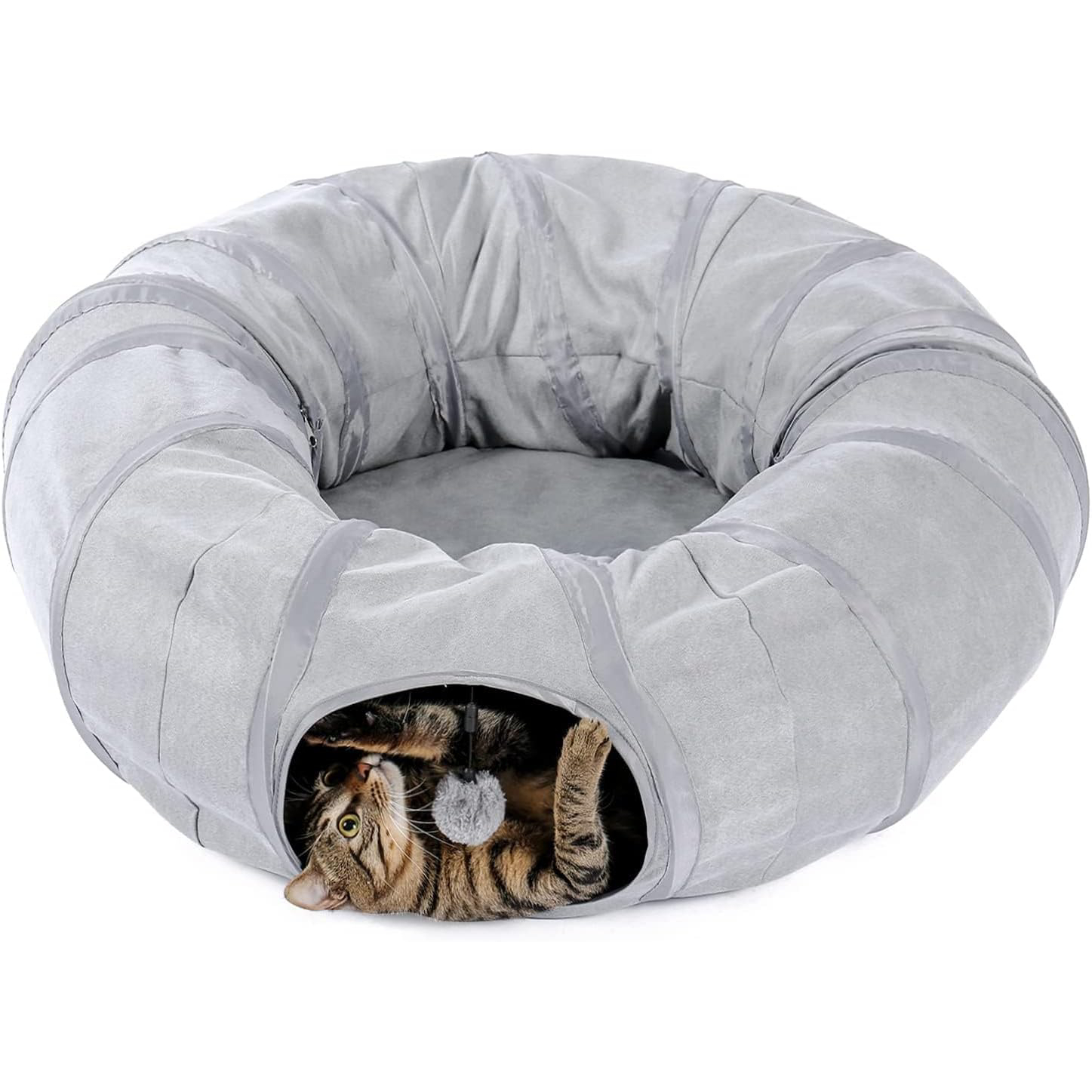
| Material: | Not indicated |
| Durability: | High |
The PAWZ Road Cat Tunnel Bed with central mat is the perfect play for feline creatures who love to hide. This is because they do this for a variety of reasons when they are outside, such as hiding from a predator or disappearing into the landscape to ambush their prey. So, it’s no wonder that a tunnel where they can hide is such an exciting game for them. They can then reproduce attack scenarios, or surprise one of their congeners if you have two or more cats at home!
The PAWZ Road Cat Tunnel is made of durable material, takes up little space in your living room, and has a dual function thanks to its cushion. Thus, the tunnel allows your kitten to hunt, run and hide, and the bed allows him to rest. Also, two balls hanging from the two windows also add a lot of fun, catching your cat’s attention. However, while the material is durable, the price may seem a bit steep, and some cat owners report that their felines were scared of the tunnel.
- Attractive design
- Easy storage
- Easy to clean
- Some cats are afraid of it
6. Buyter Cat’s Meow Undercover Moving Panic Mouse
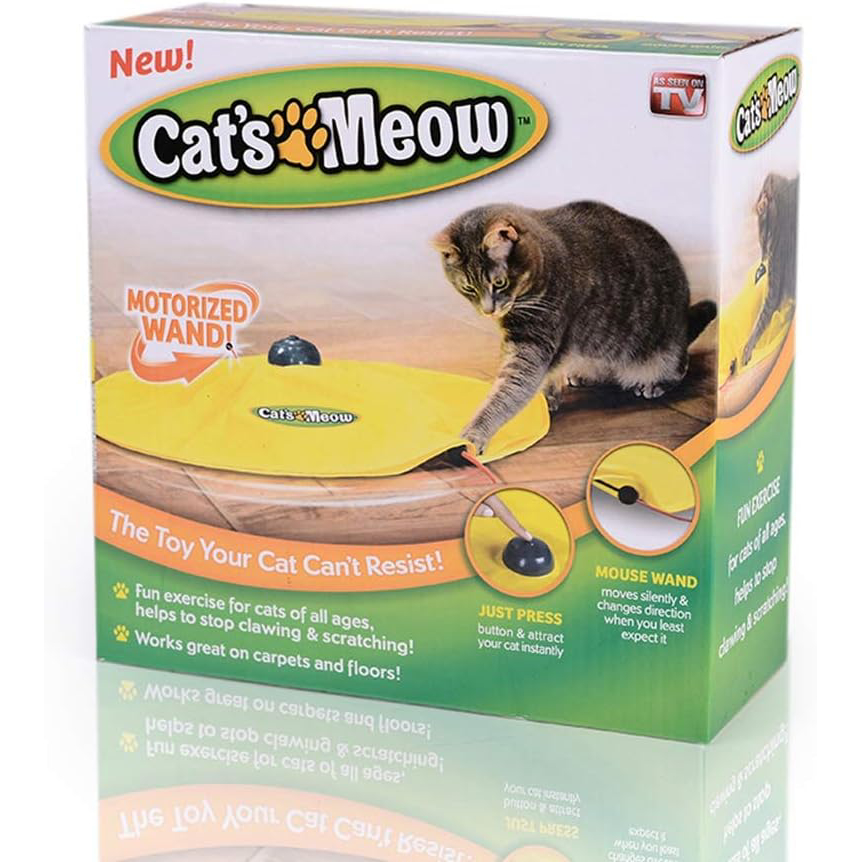
| Material: | Nylon |
| Durability: | Medium |
Your cat is probably going to go crazy for Buyter Cat’s Meow! This interactive toy consists of a circular base covered with durable nylon containing a ball programmed to move randomly. Your cat’s predatory instincts will be highly stimulated by the comings and goings of the mock mouse hidden under the nylon. However, although the material is quite durable, you may have to replace it after a while, especially if you have several cats and they play roughly with this captivating toy.
- Keep cats entertained
- Durable
- Works on carpets and floors
- Needs 3 C batteries to run
- A bit pricey
7. Trixie Mad Scientist for Cats
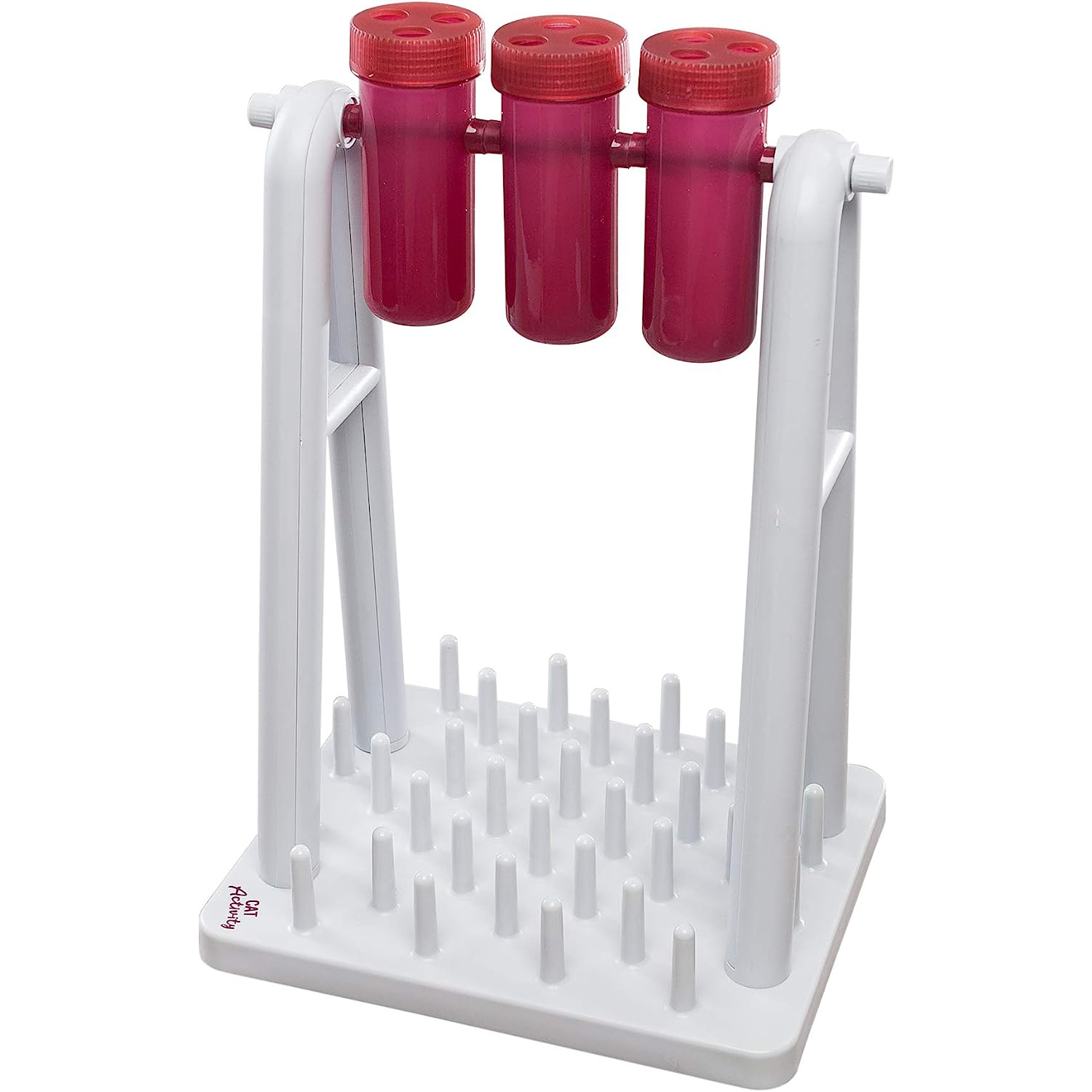
| Material: | Plastic |
| Durability: | High |
You know it as we do: a cat isn’t all about extraordinary athletic prowess, superhuman reflexes, or the flexibility of an Olympian. Cats are also formidably intelligent animals, especially strategically. However, there are few toys for them to train their minds. That’s why Trixie Mad Scientist for Cats caught our attention. This strategy game allows your feline to use their cognitive abilities to the full; indeed, he must complete specific tasks to unlock a treat. However, this original game may turn out to be a little too challenging for some cats, who gave up the toy after only a few days of trying.
- Great brain toy
- Different levels of difficulty
- May be too difficult to understand
8. Suhaco Interactive Squeak Cats Toy
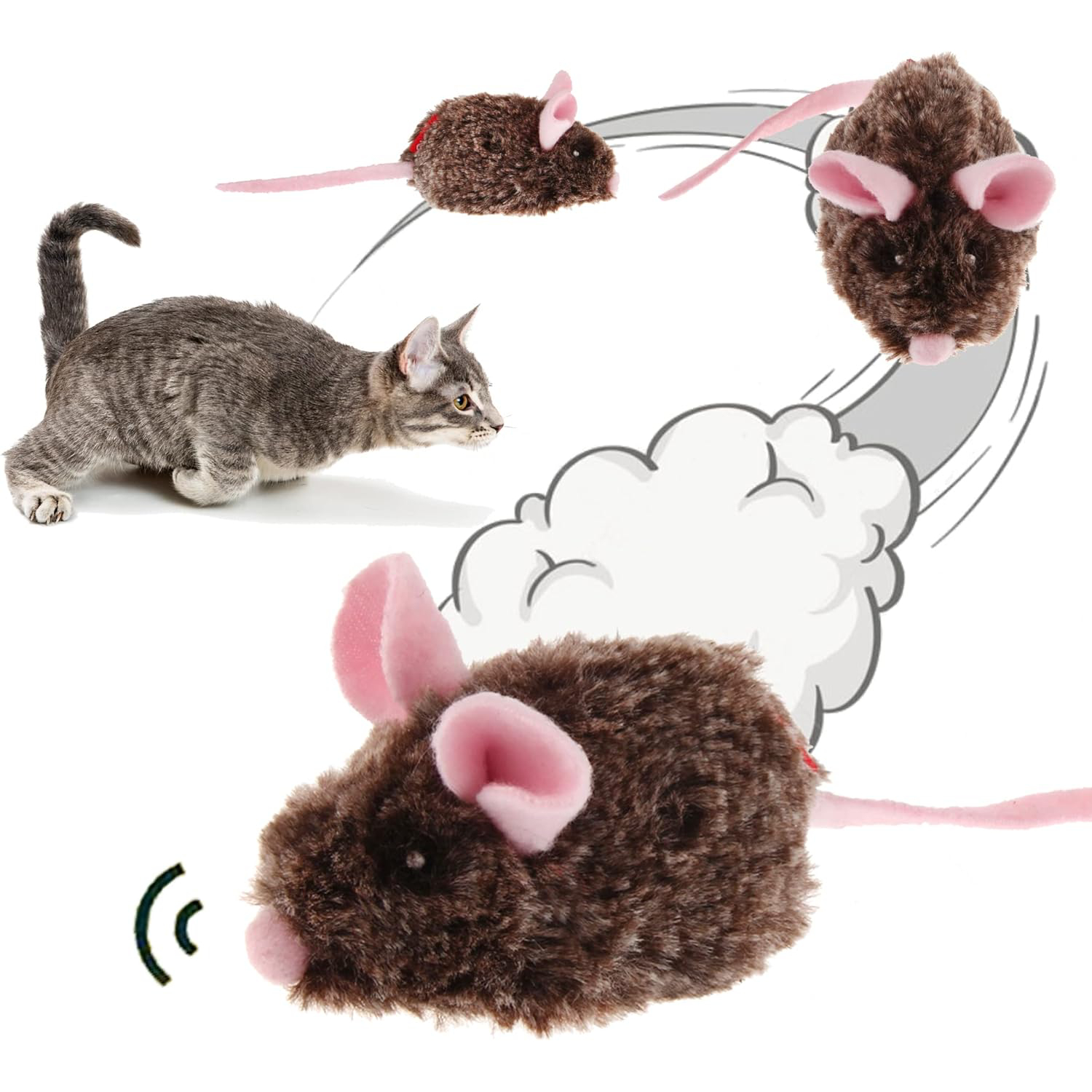
| Material: | Flannelette and electronic component |
| Durability: | Medium |
Along with birds and fish, rodents, and in particular mice, are the prey of choice for our dear cats. So, it’s not surprising to find stuffed animals bearing their likeness in pet stores. However, the mouse we’re talking about here is slightly different – it moves and makes bird sounds when your cat catches it, which will awaken your mini jaguar’s hunting genes. Plus, the realistic dimensions will give your Tom the impression of having a real Jerry Mouse between her claws. However, like any toy that makes noises, this mouse’s incessant little squeaks could be irritating in the long run.
- Easy to use
- High-quality material
- Squeaky noise may drive you insane
- Expensive
Buyer’s Guide
What are the benefits of toys for your cat?
Playing with your cat is fun for you, but a necessity for your little companion. Indeed, most cat owners love these moments of bonding with their adorable felines. We then share a privileged moment during which, most of the time, we marvel at the intelligence they demonstrate with their companion human.
However, on your kitty’s side, the game is more than fun. Let’s see why:
- As a kitten, your cat uses play to develop her motor and physical skills.
- As your kitten grows and becomes an adult, playing allows her to expand her mental energy and occupy her mind, keeping her from getting bored.
- A bored cat can quickly develop compensatory behaviors that can be very annoying.
Here is a list of behaviors to watch out for in a potentially bored feline:
- Excessive grooming
- Relentless attack (especially your calves!)
- Scratching your furniture
- Eating your houseplants (which can be dangerous, some being poisonous)
Play is also a means of education for your cat, as it keeps her intellectually and physically stimulated. The game, therefore, helps to keep her in good health by preserving her heart, muscles, and joints, while satisfying her hunting instincts!
Finally, the most important: the game reinforces your bond with your cat. If she enjoys playing with you, chances are she’ll end up picking you up systematically when she wants to play. And as companion humans, we love it!
Important things to consider when finding the right cat toy
The best cat toy doesn’t have to be the most expensive or the most sophisticated. As you may have noticed, your furball can very easily play with just about anything that rolls or nibbles. For a shared pleasure, for her safety, and her well-being, here are our best tips and advice to find THE toy he will never get tired of after a few moments!
Think about the toy that will please your kitty the most
Desperate to find the perfect toy for your feline? Doesn’t he pay the slightest attention to your fake mouse? Each cat has its own character and tastes. One thing is certain: by finding THE toy that will please your cat, you will ensure long games, with all the resulting benefits! The game is indeed central in many areas: fitness and physical health, mental well-being, socialization, and more.
Encouraging your pet to play is also the best way to avoid material damage in your home: it is better for it to scratch a scratching post than on your curtains, just as a cat tree will be more suitable than shelves in your dressing room. Depending on your character and environment, here are some ideas for finding the best cat toy.
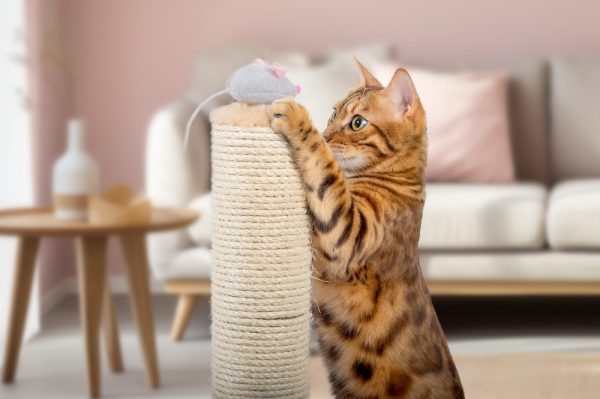
Avoid boredom with your apartment cat
Depending on the configuration of your apartment, your cat can quickly walk in circles. She’ll look for other distractions, like climbing onto your tables and shelves, and knocking down some precious and fragile knickknacks in the process! To prevent her from doing silly things out of boredom, start by dedicating high spaces for her that she can climb to observe her surroundings. In the wild, felines naturally enjoy climbing trees and watching closely what is going on around them, in case a field mouse emerges from its hole.
The best cat toy for this purpose is undoubtedly the cat tree, to buy or make yourself — with little money except for a good dose of creativity! To create an environment conducive to observation, you can set up the cat tree near a window or picture window.
- For fearful cats, choose a structure that is not very high but that offers hiding places, to create safe places for them.
- For the more intrepid felines that you regularly find on unlikely perches, indulge them with a large cat tree. They will have enough space to climb and stretch their paws.
If your little feline is used to having fun by scratching the sofa or dropping your things, don’t get upset. A cat that does annoying things is often an animal that lacks distraction.
To draw her attention to something other than your houseplant, place one of her favorite toys right next to it. A spring-loaded mouse that attaches with a suction cup, a cat ball, or any other irresistible toy are just a few examples. Your little tornado will surely prefer this new game and leave your things in place.
- Note: Similarly, you can put an easy-to-catch cat plush right next to your sofa. Your kitty will be able to bite and grab her stuffed animal with her claws.
Revive the playful spirit of an adult cat
The kitten plays readily, but over the years he becomes more comfortable and lazier. The best adult cat toy allows older cats to maintain their hunting instincts, keep fit, and guard against boredom and weariness. Indeed, some felines become more difficult to please over time. They shun the feathered sticks that amused them so much as babies. So, to awaken your old cat’s desire to play, be original by offering them irresistible and entertaining activities.
Labyrinths
With age, our cats are not so eager to run and jump all over the place. The ball maze, more suited to a leisurely pace, is the best adult cat toy. This course stimulates the mind and exercises it, without tiring it: the ideal compromise! Your pet won’t have to chase after a mouse but will have fun trying to catch a ball trapped in a rotating maze. By the time he manages to get all the balls out, allow several minutes to watch with amusement as your companion gets excited in front of these balls that won’t let themselves be caught! If you have more than one cat, the game might get funny. They will be able to return the ball to each other without ever leading it to the exit. It is easier for an adult feline to become interested in a game if she sees another of her congeners having fun.
A new game environment
Your old cat knows every nook and cranny of your house and loses interest in her old toys? Surprise her and offer her a new environment to have fun! Simple but effective, cat tunnels are practical for creating a space conducive to hide-and-seek and run. Felines love to explore and sneak into unlikely places. To encourage her to go through the tunnel, you can drop some treats inside and hang mice or feathers on them. This way, she will regain the excitement of exploring this tunnel and having fun running around.
Summary
The bottom line? The most important thing to find the best cat toy is to consider your cat’s desires and needs. Your pet will be able to play for several hours with a simple card box, rather than with the latest electronic toy. Be original and stay tuned, your cat will be very good at making you understand what he likes and what he dislikes. However, Canadians will find some great options in our list: the best cat toy overall is without a doubt the Interactive Treat Maze & Puzzle Game by Cat Amazing, due to its reasonable price and recommendation from vets. But, a simple moving fish or the Legendog Catnip toys are great options for the money, which will keep your kitten entertained, happy, and healthy!
Contents
- A Quick Comparison of Our Favorites in 2024
- The 8 Best Cat Toys in Canada
- 1. Cat Amazing Interactive Treat Maze & Puzzle Game for Cats – Best Overall
- 2. Legendog Cat Catnip Toys – Best Value
- 3. Trixie Alicante Cat Tree – Premium Choice
- 4. Electric Dancing Fish Catnip Toy
- 5. PAWZ Road Cat Tunnel Bed with Central Mat
- 6. Buyter Cat’s Meow Undercover Moving Panic Mouse
- 7. Trixie Mad Scientist for Cats
- 8. Suhaco Interactive Squeak Cats Toy
- Buyer’s Guide
- Important things to consider when finding the right cat toy
- Think about the toy that will please your kitty the most
- Avoid boredom with your apartment cat
- Revive the playful spirit of an adult cat
- Labyrinths
- A new game environment
- Summary


